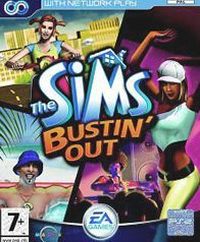

This is done in the same way as The Sims, with the player allocating 25 personality points between 5 different traits (Neat, Outgoing, Active, Playful, and Nice), all of which allow for a maximum of 10 points to be assigned to them.

The number of choices available for each option are minimal, most noticeably with Skin Tone, which only presents the player with three choices.Īfter this, the player decides on their Sim's personality. Pants are limited to men, whilst Skirts are limited to women. This includes: Gender, Skin Tone, Hair Style, Hair Color, Shirt Color, Pants/Skirt Color, and Shoes color. Once a name has been chosen, one is able to customise their Sim's Appearance. This name must be eight characters or less. These characters are less important to the overall narrative, however they are still fully interactable and can become roommates with your Sim.Ĭreate-a-Sim opens onto the Name Your Sim screen, which presents the player with a keyboard which can be used to enter their Sim's name. These are major characters who play an important role in the story. The Sims Bustin' Out for handheld features a wide variety of characters, whom the player may improve their relationship with by choosing the correct dialogue. As Sims advance through the game, new areas become accessible, and new mini-games may be unlocked in certain areas. There are various locations Sims may visit throughout the course of the game.

Instead, the player unlocks new houses by progressing through the story missions.ĭeviating from the "point-and-click" selection process heretofore used in most Sims titles, this version allows the user to control their Sim directly, using the GBA's directional pad. In this game, there are no furnishing objects to unlock. Like the console version, GBA version gameplay is objective-based - every time the player completes a series of tasks, the game is allowed to progress. The Game Boy Advance version puts the player's Sim in a place called " SimValley" for summer holiday.


 0 kommentar(er)
0 kommentar(er)
